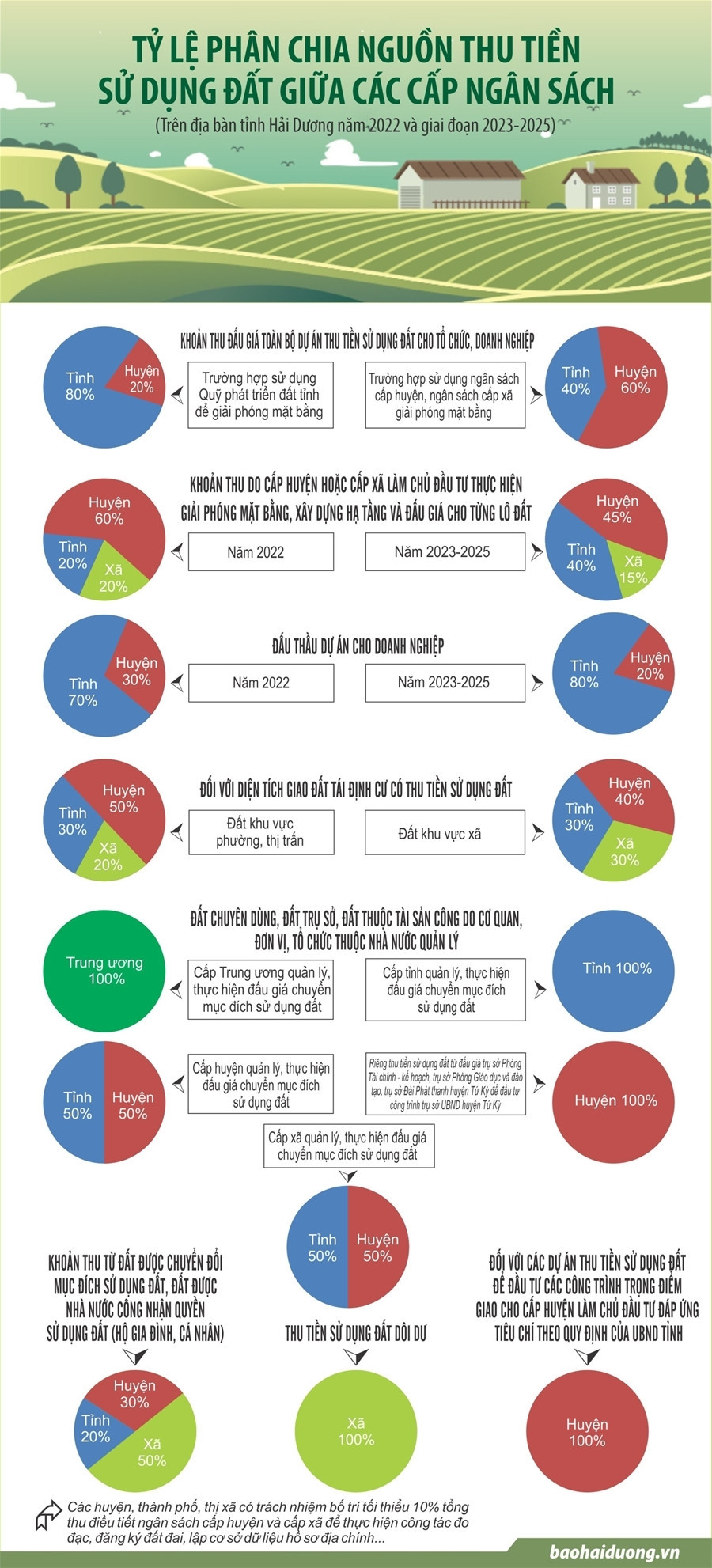At the 16th session of the 17th Provincial People's Council, an issue that many delegates raised was the percentage (%) of land use revenue division among budget levels in the province for the period 2022-2025.

People visit the residential project site in Nam Sach after the auction. Photo: Archive
According to Resolution No. 05/2021/NQ-HDND dated October 29, 2021 of the Provincial People's Council on the rate of regulating land use fee collection in the period of 2022-2025, for district- or commune-level projects as investors to carry out site clearance, infrastructure construction and auction for each plot of land, the revenue sharing ratio in 2022 is 20% for the provincial budget, 60% for the district level and 20% for the commune level; in the period of 2023-2025, it is 40% for the provincial budget, 45% for the district level and 15% for the commune level. Many delegates proposed to increase the revenue sharing ratio for the district and commune budgets to create motivation to promote the implementation of land use fee auction projects and have resources to provide investment facilities for works and projects.
Nearly 2 years ago, the delegates of the 17th Provincial People's Council voted to approve Resolution No. 05/2021/NQ-HDND. The goal of the resolution when increasing the land use revenue sharing ratio for the provincial level is to prioritize investment in large projects and works, especially transportation, health, education works... that are dynamic, spreading, and promote socio-economic development of the province and localities. This also aims to overcome the situation of ineffective use of land resources, scattered investment, and lack of large projects and works to promote development in localities in the province. Before issuing Resolution No. 05/2021/NQ-HDND, the Standing Committee of the Provincial People's Council organized supervision in a number of localities on the above content. In Binh Giang district, in the period of 2015-2020, the district collected 1,828 billion VND in land use fees, an increase of 317.9% compared to the plan assigned by the province and was the locality with the second highest land use revenue in the province. During this period, with land revenue, Binh Giang invested 1,623 billion VND in building 619 projects but there were no large-scale projects.
In addition, Resolution No. 05/2021/NQ-HDND also creates a favorable mechanism for the district level to use land resources more effectively, avoiding fragmented and long-term investment. According to the resolution, for projects collecting land use fees to invest in key projects assigned to the district level as investors that meet the criteria prescribed by the Provincial People's Committee, 100% will be divided to the district budget. Up to now, the province has had 3 projects implemented under the above mechanism and are expected to create breakthroughs and promote development, namely the East-West axis road project of Kim Thanh district; the new Cay bridge approach road and the 33m extended road (through Cam Giang district) connecting Vu Cong Dan street (Hai Duong city); renovation and expansion of Vu Cong Dan street (Hai Duong city).
In addition, Resolution No. 05/2021/NQ-HDND also promotes decentralization, delegation of power, increasing autonomy associated with enhancing the responsibility of authorities at all levels in increasing land value and effectively using land resources. The Resolution also aims to maximize land resources, gradually converting the method of the State itself clearing land, investing in infrastructure to divide lots, auctioning land use rights to the method of the State only clearing land, auctioning land to enterprises investing in infrastructure. According to the Resolution, in the case of using the district or commune budget to clear land and auction the entire project to collect land use fees for organizations and enterprises, the district budget will be allocated 60% of the land use fees, 15% higher than the district or commune level as the investor in clearing land, building infrastructure and auctioning each land lot. Calculations by the Department of Finance also show that if implemented in the above manner, the revenue regulated to the district budget is likely to increase by over VND 1,300 billion in the 2021-2023 period. Reducing the rate of land use revenue regulation to the commune budget also aims to help the district budget regulate resources, support disadvantaged areas, and avoid the situation where resources are concentrated in localities with developed socio-economic and infrastructure conditions, and favorable land use rights auctions.
Resolution No. 05/2021/NQ-HDND dated October 29, 2021 of the Provincial People's Council on the rate of regulating land use fee collection for the period 2022-2025 has been aiming at two major goals: maximizing land resources and prioritizing resources to invest in large, key projects. In the context that Hai Duong has reached the new rural destination, essential infrastructure in communes, wards and towns has been basically completed, prioritizing resources to invest in large-scale projects to promote development is very necessary. The current difficulties in the gloomy real estate market also show that dependence on land revenue causes many consequences.
For the common goal of the province, the Party committees and authorities at all levels need to implement more drastic, specific and practical solutions to improve the investment and business environment, attract social resources to promote Hai Duong's sustainable development.
HOANG LONG